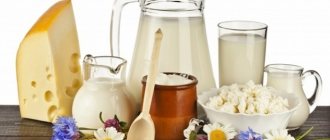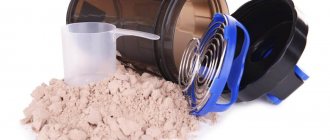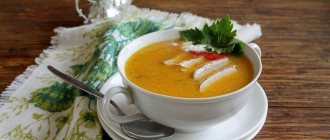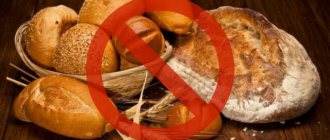One of the main microelements that the body needs is fiber. It plays a huge role in digestion and takes part in the absorption of nutrients. It can also affect the feeling of hunger. People who want to lose weight or improve the condition of the digestive system should pay attention to the amount of this substance in food. You can increase the amount of fiber by taking it in tablets or powder. However, this can also be done naturally by increasing the amount of products containing the substance.
Chemical composition and nutritional value of buckwheat
Buckwheat is rich in minerals. Potassium, magnesium, manganese, copper, phosphorus in boiled buckwheat are well absorbed because there is little phytic acid in the cereal grain:
- Potassium - 100 g of product contains 12.8% of the daily requirement. Normalizes blood pressure and regulates the functioning of the heart muscle.
- Magnesium - 37.5%. Regular consumption of buckwheat porridge normalizes sleep, relieves stress, and helps fight depression.
- Manganese - 50%. Normalizes metabolism in the body.
- Copper - 36%. Promotes collagen formation, iron absorption and plays an important role in energy production.
- Phosphorus - 30%. Participates in metabolic processes and bone tissue formation. However, excessive consumption of buckwheat, especially with a mono-diet, is fraught with the deposition of phosphorus in the bones to the detriment of calcium. This leads to their fragility. Therefore, it is important to combine buckwheat dishes with foods rich in calcium.
Cereals contain vitamins . Chief among them:
- Rutin - 30% of the norm. The main storage of rutin is the shell of grains, in which its amount is 17 times greater than the content in the kernel. Improves blood circulation, blood lipid profile, prevents the formation of blood clots, reduces capillary permeability.
- Thiamine - 28%. Improves energy and carbohydrate metabolism in the body. However, in porridge its content is much less. There is only one way out: do not cook, but steam the cereal.
- Vitamin E, or tocopherol , - 44%. Antioxidant, improves immunity, participates in collagen synthesis.
- Nicotinic acid - 30%. Actively participates in redox processes, promotes tissue growth, stimulates the production of hormones, improves the functioning of the gastrointestinal tract, and prevents migraines.
Interesting things on the site:
Which is healthier: buckwheat, lentils or oatmeal?
Colon cleansing with buckwheat and kefir
What is the glycemic index of buckwheat?
Calorie content, dietary fat and glycemic index
The calorie content of buckwheat is about 308 kcal per 100 g of product , which is 20% of the daily value:
- Proteins - 10-12%. High-quality, balanced in amino acids, rich in essential lysine and arginine. In animals, buckwheat protein has been shown to be effective in lowering blood cholesterol, inhibiting the formation of gallstones, and reducing the risk of colon cancer.
- Fats - 3.0-3.5%. Such a low amount allows the cereal to be used as a dietary product.
- Buckwheat consists mainly of complex carbohydrates - up to 60%. It has a low glycemic index (50-60), which eliminates sudden surges in blood sugar and ensures a feeling of fullness for a long time.
How to start eating more fiber
Before you empty store shelves in search of magical weight loss products, it is worth knowing that you do not need to introduce a lot of fiber into your diet at once, as this can cause some difficulties not only for you, but also for the people around you.
To make the transition to a high-fiber diet easier, start by determining how much fiber your gut is accustomed to receiving each day over several days, recording the results in grams. A spreadsheet can be an extremely useful way to do this.
After this, add 3-5 grams of fiber every 2-3 days and watch your body’s reaction. Do this until you reach the recommended daily intake.
Here's what that 3-5 grams of fiber looks like in nutritional equivalents:
- 1 small apple with peel: 3 grams;
- 1 cup strawberries: 3 grams;
- 1 medium banana: 3 grams;
- ½ cup whole wheat pasta: 3 grams;
- 1 whole wheat muffin: 3 grams;
- ¾ cup cereal flakes: 5 grams;
- 1 cup boiled oatmeal: 4 grams;
- 1 slice of whole grain bread: 3 grams;
- ¼ cup cooked lentils: 4 grams;
- ¼ cup cooked hyacinth beans: 3.75 grams;
- 28 grams of almonds: 3.5 grams;
- ½ cup cooked peas: 4 grams;
- 1 small potato with skin: 4 grams;
- 1 cup roasted Brussels sprouts: 4 grams;
- 1 cup broccoli: 5 grams;
- 2 tbsp. crispy chickpeas: 4 grams.
If you want to lose weight by eating more fiber, then you need to eat the foods listed in this article instead of the ones you eat every day. Because the process of losing weight comes down to consuming fewer calories.
Here are some more tips to help minimize side effects while increasing your fiber intake:
- Soak dry pulses and boil them well. This helps break down some of the gas-causing sugars called oligosaccharides and also prevents constipation.
- Avoid other gas-causing foods: carbonated drinks, protein bars, sugary alcoholic drinks, candy.
- Drink more water. This is necessary to dissolve and move fiber through the intestines, which also helps get rid of excess gas and bloating.
Once you've established your diet and are getting the recommended amount of fiber in your diet, try all of the high-fiber foods listed above.
They will help satisfy your hunger, despite the fact that to satiate you only need a small portion with a minimum of calories. So enjoy losing weight and get maximum health benefits from fiber.
How much fiber is in boiled buckwheat?
Fiber makes up 2.7% of the weight of cooked cereals and is primarily composed of cellulose and lignin . Fiber is concentrated in the husks that cover the grain. The grain shell also contains digestion-resistant starch, which is classified as fiber.

Cooking fiber at home video
For this you will need:
- flax seeds;
- pumpkin seeds; + coffee grinder.
There is a lot of talk about the benefits of fiber and many people know about it. Modern stores sell super-expensive and super-cheap fiber; it is recommended for use by both adults and children.
For all the health benefits attributed to fiber, it may not be as beneficial to health because we, as consumers, cannot control how and from what it is made in production conditions.
Therefore, it is most useful to prepare simple fiber with your own hands at home, and even with antiparasitic properties. For this we need flax seeds, which themselves are superfoods. They are sold in every pharmacy, in all specialized stores and are inexpensive. The second component is pumpkin seeds. You can take the seeds without the peel, but if it is thin, not very thick and rough, then it will only be better.
In order to prepare fiber, one coffee grinder is enough, with the help of which the seeds and seeds are ground into powder. You can grind them separately, or together, depending on how convenient it is for you and how you like it best.
Thus, the result is fiber that has all the advantages that can only be attributed to it.
. The process does not take much time and requires from us only our desire and understanding that this is useful and good for modern man with his diet, refined foods, and abuse of all kinds of flavoring additives.
If you decide to grind the seeds and seeds separately, then you can eat them either one at a time, or you can mix them together and get universal fiber with an antiparasitic effect and many useful substances, vitamins, and microelements. The main condition when preparing such a product is that both the seeds and seeds must be raw, not fried, because during heat treatment many substances are lost, and the health-improving effect is reduced to zero. Thus, we use everything in its raw form. After the ingredients have been ground and mixed, you can pour the finished fiber into an airtight container and store it on a shelf in the kitchen cabinet.
Application:
- Waking up in the morning on an empty stomach, drink a glass of raw clean water,
- After 10-15 minutes (while you wash your face and brush your teeth), eat fiber. For adults - a teaspoon; children can start with half a teaspoon and work up to one tablespoon. At the same time, monitor how fiber will be absorbed by your body and your child’s body. Flax seeds and pumpkin seeds contain fats that can cause discomfort, like eating a very fatty meal. But this is rather an exception to the rule, since these fats are natural and even healthy in small quantities.
- After another 15 minutes you can safely have breakfast. If you use cereal, cottage cheese or something similar, then fiber can be added to any dish. For example, sprinkle the same porridge with a tablespoon of fiber and eat both breakfast and fiber at the same time.
Fiber has the taste of raw sunflower seeds. The cost of self-prepared fiber is much lower than that purchased ready-made, and in terms of quality, nutritional and health value it is much higher
.
You can use the product 2-3 times a day.
When reproducing the text of the article Products rich in fiber, in whole or in part, an active link to the website cooktips.ru is required.
We advise you to read about the dangers and benefits of other products:
- The harm and benefits of fish - answers from a researcher at the National Research Institute to the questions: is fish harmful or beneficial, to eat fish or not.
- The harm and benefits of potatoes + delicious vegetarian dishes made from them.
- The harm and benefits of juices - the problem with juices is that they contain more fructose than fruits and, moreover, they contain fiber and vitamins...
- The benefits and harms of freshly squeezed juices are determined by the content of various beneficial and harmful substances and their dose...
- The benefits and harms of halva are nearby, so do not overdo it with its use, so as not to shift the balance.
The benefits of fiber for the human body
Fiber is complex carbohydrates that cannot be digested in the stomach . However, they play an important role in the digestion process. Fiber can be water-soluble or insoluble.
Soluble fibers (tar, hemicellulose, pectin and alginase) are found in seaweed, fruits, legumes, oats, and barley. Their main function is to normalize the intestinal microflora. Dissolving in water, they turn into a jelly-like mass, which serves as a haven for beneficial bacteria.
Insoluble fibers (lignin, cellulose) swell in water and partially dissolve. It is important to drink plenty of water when using them.
Lack of dietary fiber leads to:
- to an increase in blood glucose;
- constant feeling of hunger.
Fiber has a variety of effects on the body:
- Facilitates the movement of food through the intestines. The fibers form a “food lump” that the intestinal walls easily push forward.
- Prevents the formation of constipation, which leads to stagnation of blood in the veins of the pelvic area. And this is the cause of hemorrhoids. Constipation provokes intoxication of the body, stretches the walls of the large intestine, which affects the functioning of other digestive organs.
- Reduces the level of bad cholesterol in the blood, prevents the development of atherosclerosis.
- Improves immunity thanks to beneficial bacteria. They produce fatty acids that feed the cells lining the colon. The result is improved gut health and a reduced risk of colon cancer.
Fiber diet
A fiber diet gives excellent weight loss results. The main thing is to remember that this result directly depends on whether the person follows all the recommendations. Basic rules for this diet:
- It is recommended to drink as much ordinary water as possible.
- Products containing dietary fiber should account for 70-75% of the total diet. It’s not difficult to determine from the list of products that contain it.
- Try to eat foods raw. As a last resort - stewed.
- Eat more salads, soups and cereals.
- If a little time has passed after eating, but the feeling of hunger does not leave, snack on unsweetened fruit or drink a glass of kefir.
- Completely exclude from your diet: semi-finished products, sausages, smoked foods, sweets, etc.
- Those with a sweet tooth can replace cakes and pastries with dried or fresh fruit. Sometimes you can afford 100 grams of ice cream, but it must be milk and without additives.
Fiber intake standards
For the proper functioning of the body, a person should consume 25-30 g of fiber per day . For people engaged in heavy physical labor and athletes - up to 40 years.
Most people in the world consume no more than 20 grams of fiber per day.

The required amount of fiber can be obtained from regular food, without resorting to the use of dietary supplements and other expensive “fiber-enriched” products. For this:
- the diet includes buckwheat, oatmeal, and legumes;
- replace products containing simple carbohydrates (sugar, baked goods made from premium flour) with complex ones (bread made from wholemeal flour, pasta made from durum wheat);
- Prepare potatoes in their skins.
Nutritionists advise eating at least 5 different vegetables and fruits per day.
List of low content foods
A product has a low fiber content if 100 g of it covers the daily requirement for it by only 40% or less. They are also worth paying attention to, as they include other essential microelements.
List of products with fiber content per 100 g from 8 to 12 g and daily requirement limits from 27 to 40%:
- Oats (grain).
- Buckwheat (kernel).
- Wheat (grain, durum).
- Lentils (grain).
- Peas (shelled).
- Sifted rye flour.
- Wheat (grain, soft variety).
- Rose hip.
- Pistachios.
- Chickpeas
- Buckwheat flour.
- Raisin.
- Rice.
- Wheat flour.
- Prunes.
- Oatmeal.
- Peanut.
- Barley groats.
Products with limits for the amount of fiber per 100 g from 6 to 7.9 g and a minimum and maximum daily requirement from 20 to 26.9%:
- Pearl barley.
- Chocolate is bitter.
- Chanterelles.
- Almond.
- Avocado.
- Wheat flour 2nd grade.
- Cloudberry.
- Feijoa.
- Boletus mushrooms.
- Dates.
- Hazelnut.
- Oat flakes "Hercules".
- Walnut.
List of products with fiber content per 100 g from 4 to 5.9 g and daily requirement from 14 to 19.9%:
- Sesame.
- Red rowan.
- Green peas (fresh).
- Russula mushrooms.
- Sunflower seeds (seeds).
- Honey mushrooms.
- Boletus mushrooms.
- Pasta made from 1st grade flour.
- Corn grits.
- Oat flour (oatmeal).
- Black currant.
- 1st grade wheat flour.
- Corn flour.
- Chocolate candies.
- Wheat cereal.
- Oatmeal flour.
- Jerusalem artichoke.
- Rowan chokeberry.
- Brussels sprouts.
Products with limits for the amount of fiber per 100 g from 2 to 3.9 g and a daily requirement level from 7 to 13.9%:
- Kiwi.
- Quince.
- Raspberries.
- Rhubarb (greens).
- Cranberry.
- Gooseberry.
- Green beans).
- Dill (greens).
- Carrot.
- Eggplant.
- Cowberry.
- Beet.
- Peach.
- Parsley (greens).
- Ginger (root).
- White cabbage.
- Cashew nuts.
- Lemon.
- Pumpkin.
- Cauliflower.
- Orange.
- Strawberries.
- Leek.
Let's sum it up
Having analyzed the beneficial properties and effects of fiber, we can conclude that it is very effective for weight loss. If you plan your diet correctly, your weight loss results will be impressive. The main thing to remember are the main points:
- Avoid sweets and baked goods. Instead of bread, use crispbreads that contain a lot of cereals in the shell. Fruits with yogurt or cottage cheese can easily replace desserts.
- Get active in sports. There should be at least an hour between workouts and meals.
- You need to drink a lot of water. Love the water. Remember that tea or juices are also food.
- Under no circumstances should you eat high-calorie foods at night. If you want to stop the headache, drink kefir with fiber and your body will immediately feel full.
- Include more fruits, vegetables, various cereals and soups in your diet. Just remember that porridge needs to be cooked in the inlet (sometimes it’s better to just add water), without adding oil, and soups in lean vegetable broth.
- Take evening walks and lead an active lifestyle.
- Remember that fiber will not only burn fat deposits, but will also have a beneficial effect on the entire body.
Post Views: 11
Fiber-rich foods

As can be seen from the table at the end of the material, bran is the food product richest in fiber. In fact, bran is the hard shell of the grain or continuous dietary fiber. Next come flaxseed and whole grain cereals (for example, pearl barley, buckwheat and oats) - on average they contain up to 10-15 g of fiber per 100 g of dry product. In addition, there is a lot of fiber in all types of legumes, seeds and nuts.
Fiber-rich foods:
Bran
Leader in plant fiber content - up to 45% by weight. At their core, they represent the ground shell of grains of various cereal crops (wheat, rye, oats and even rice). It is important to remember that being a wheat processing product, they may contain gluten.
Plants' seeds
They are variable. Chia seeds contain water-insoluble fiber that absorbs liquid like a sponge - more than 30% of the weight of the seeds. Flaxseed also has a number of health benefits, containing about 25% dietary fiber.
Whole grain cereals
Each of the cereal crops has its own characteristics. For example, oats contain beta-glucan, which normalizes blood sugar levels and reduces hunger. Bulgur contains the most fiber (almost 20%) and is the healthiest version of wheat.
Pseudograins
Formally, buckwheat, quinoa and millet are not grain crops, but pseudocereals - in fact, they are plant seeds. They usually contain from 10% to 15% dietary fiber - this means the weight of dry cereal before cooking; in porridge the figure is lower.











